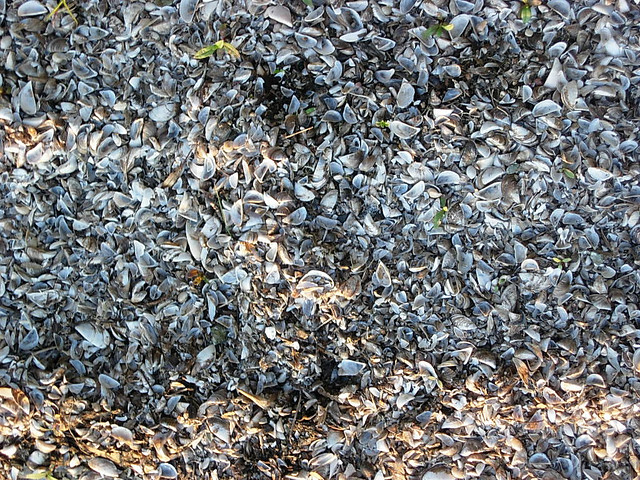Science Teachers Guilty of Releasing Invasive Species
New research finds that one out of four science educators in the U.S. and Canada released lab animals into the wild after they were done using them in the classroom, introducing a surprising but potentially serious pathway for invasives to take hold in new locales.

Invasive zebra mussels. Photo: Andres Musta
New research finds that one out of four science educators in the U.S. and Canada released lab animals into the wild after they were done using them in the classroom, introducing a surprising but potentially serious pathway for invasives to take hold in new locales. Zebra mussels, Asian carp, kudzu, pythons — invasive species wreck havoc on native animals and plants, regional economies and overall environmental functioning.
Researchers presented their work on the subject at the Ecological Society of America conference and commented in a press release:
“Live organisms are a critical element for learning and we don’t want to imply that they should not be used in the classroom,” said Sam Chan, an Oregon State University invasive species expert and a principal investigator on the study. “But some of our schools – and the biological supply houses that provide their organisms – are creating a potential new pathway for non-native species to become invasive.
To arrive at these findings, the researchers surveyed nearly 2,000 teachers in Florida, New York, Indiana, Illinois, Oregon, Washington, California, Connecticut, British Columbia and Ontario. They also spoke with biological supply house owners and managers.
Teachers across North America use up to 1,000 different organisms in their lessons, they found, and in particular many of the aquatic species are known potential invasives, including crawfish, amphibians, mosquito fish, red-eared slider turtles other animals and many plants.
“Oregon teachers who have ordered crayfish that originate in the Pacific Northwest have found that their mortality is extremely high, so many have taken to ordering crayfish from distributors who get their supply from Louisiana,” Chan said. “The problem is that we have no idea whether those crayfish may carry diseases or parasites that may be problematic if those animals are released into the wild here.”
But what can an empathetic teacher do with leftover animals when the lesson is finished? The researchers found that about half the teachers opt for euthanasia, and they advise that concerned teachers should consult a local veterinarian on how to best go about this in a humane way. Using native animals for science lessons could also alleviate the problem.
Another lingering impediment is that biological supply companies – which provide about 50 percent of science teacher’s animals, with the other half coming from pet stores – don’t see the animals’ eventual fate as their problem.
“More than one of them told us ‘it isn’t our job to educate the teachers,’” Chan said. “On the flip side, there were some who said they would be willing to work with us to try to provide more local organisms.”
Though there’s no clear-cut solution, the researchers hope their work provides a first step in getting science teachers to consider this issue and avoid contributing to the invasive species problem.
“Many of the teachers were mortified when we pointed out they may be exacerbating the invasive species problem,” Chan said. “They want to be part of the solution, not part of the problem. But it is a complex issue. We don’t want to discourage the use of live organisms in teaching because they can provide focus, enhance student interest, and foster responsibility and care.
More from Smithsonian.com:
/https://tf-cmsv2-smithsonianmag-media.s3.amazonaws.com/accounts/headshot/Rachel-Nuwer-240.jpg)
/https://tf-cmsv2-smithsonianmag-media.s3.amazonaws.com/accounts/headshot/Rachel-Nuwer-240.jpg)